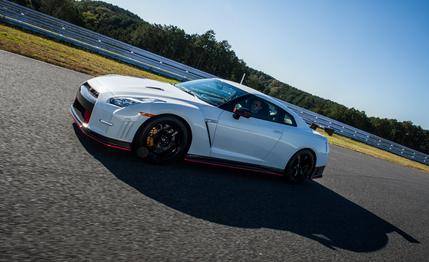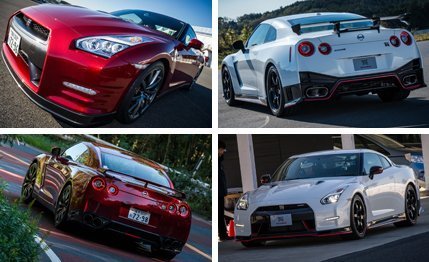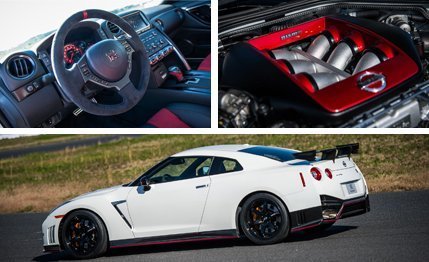
 First Drive Review
First Drive Review
Nissan GT-R fans, you can chill out or relax—or even chillax, if that’s your thing. It’s true that the standard 2015 GT-R is slightly toned down, but it’s not as though the automaker chiseled off the supercoupe’s hard edges. Think of them instead as sanded down by microns, an ever-so-slight reversal of course enabled by the fact that there now exists the baddest-ass Godzilla the world has ever seen: the new GT-R NISMO.
As for that “softening,” it isn’t necessarily a bad idea to tame the all-wheel-drive supercoupe a bit. Remember that current GT-R customers are advised they needn’t take their car to the dealer because of the uncouth noises it makes. Here’s what’s different for the non-NISMO car: The suspension gets new spring rates, revalved shocks, a softer, hollow 34-mm front anti-roll bar, and bushings that are softer in the vertical plane. New tires—measuring 255/40-20 up front and 285/35-20 at the rear, and still branded as Dunlop SP Sport Maxx GT 600 DSST CTTs—have stiffer sidewalls and are said to be not so much softer as more compliant.


In fact, “compliance” might be the overarching theme of the 2015 GT-R. Nissan engineers admit they found many circumstances in which a slightly squishier suspension could be just as effective, and possibly more so, on pavement that’s less than dead smooth; as they put it, “a more compliant suspension means more traction on a wider selection of roads.” For reference, the bogies in this regard were the Porsche 911 and various Mercedes AMG models. Nissan added more sound-deadening material as well as a Bose noise-canceling program for the sound system, all the better to quiet the cabin. It hasn’t been turned into anything close to an anechoic chamber or anything, but it will be a little more livable for long hauls and should improve the quality of those mechanical sounds that still filter through to occupants’ ears. For all the chassis changes in the 2015 GT-R, there are few visual differences, mainly, new headlamps lit via LEDs and some minor materials changes inside. (Read more about the 2015 GT-R.)
And Now for Something Completely NISMO
Of course, the GT-R NISMO heads in the opposite direction. The aim was to set a Nürburgring Nordschleife lap record for what Nissan calls “volume production cars,” the word “volume” allowing the maker to disavow the production-car crown recently grabbed by Porsche’s limited-run 918 spyder at 6 minutes 57 seconds. That is not to take anything away from this wicked GT-R, however, which ran around the Ring in 7 minutes 8.679 seconds when fitted with special track options the company will sell to whoever ponies up enough cash. (Nissan promises you’ll be able to own a GT-R like the lap car for less than $200,000.)


The NISMO receives more power—595 horsepower and 481 lb-ft, up from 545 and 463—thanks to better breathing and larger turbos lifted from the GT-R GT3 race car. Bilstein DampTronic shocks with new Track, Race, and Race Plus modes are used all around, as are stiffer springs. New front links increase caster trail and both straight-line and cornering stability. Dunlop supplies stickier 255/40-20 front and 285/35-20 rear tires, and beefier bolts have been employed in the wheel-hub attachment area to stiffen the assembly. Out back is a hollow, 17.3-mm anti-roll bar, and the entire structure of the NISMO version is stiffened by a claimed eight percent using more adhesive bonding to complement additional seam welds.
Outside, the NISMO’s front end and side sills receive red trim, and there are wider six-spoke wheels. More aesthetic wattage comes courtesy of the car’s aggressive aero package that includes a reshaped front fascia, a new rear fascia, and a burly rear wing—all of which conspire to increase downforce by, it’s said, more than 220 pounds at 186 mph. Nissan’s stated coefficient of drag, however, remains the same as that of the base GT-R, at 0.26.